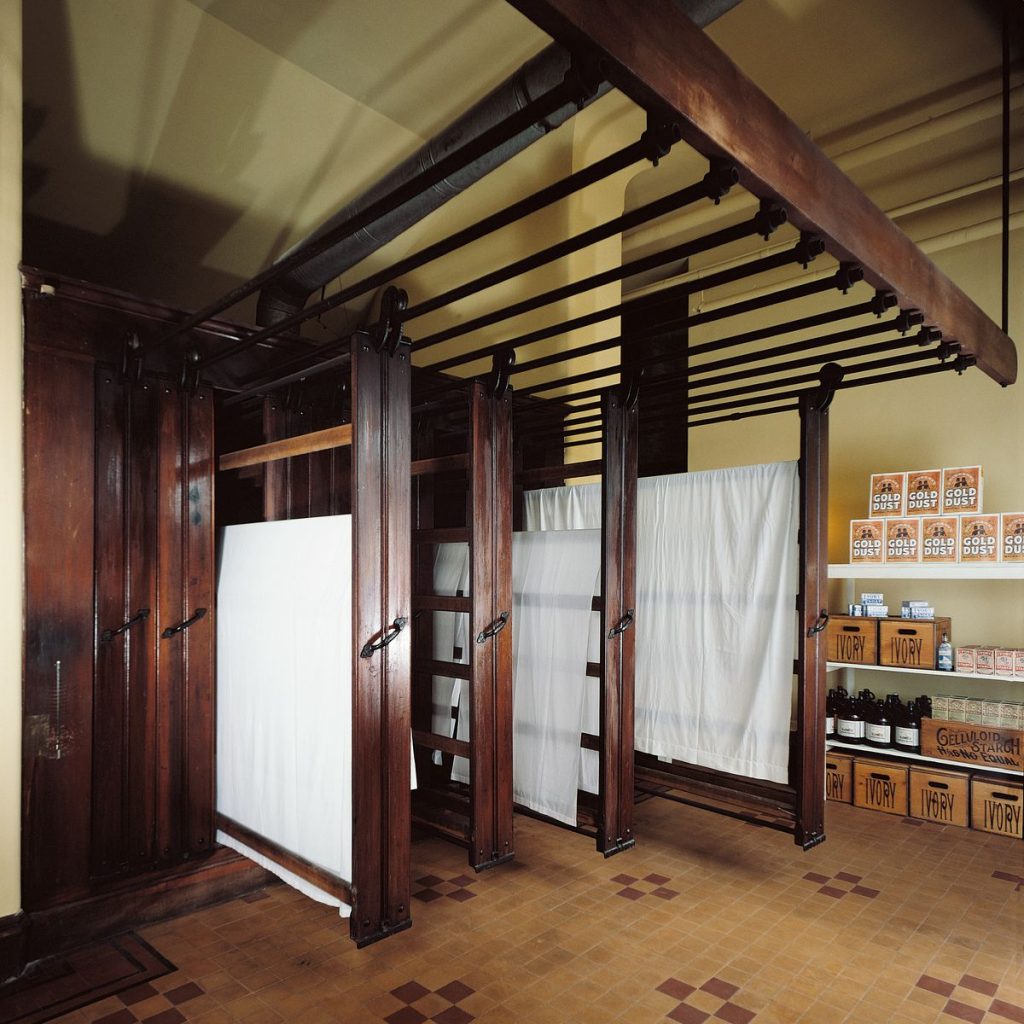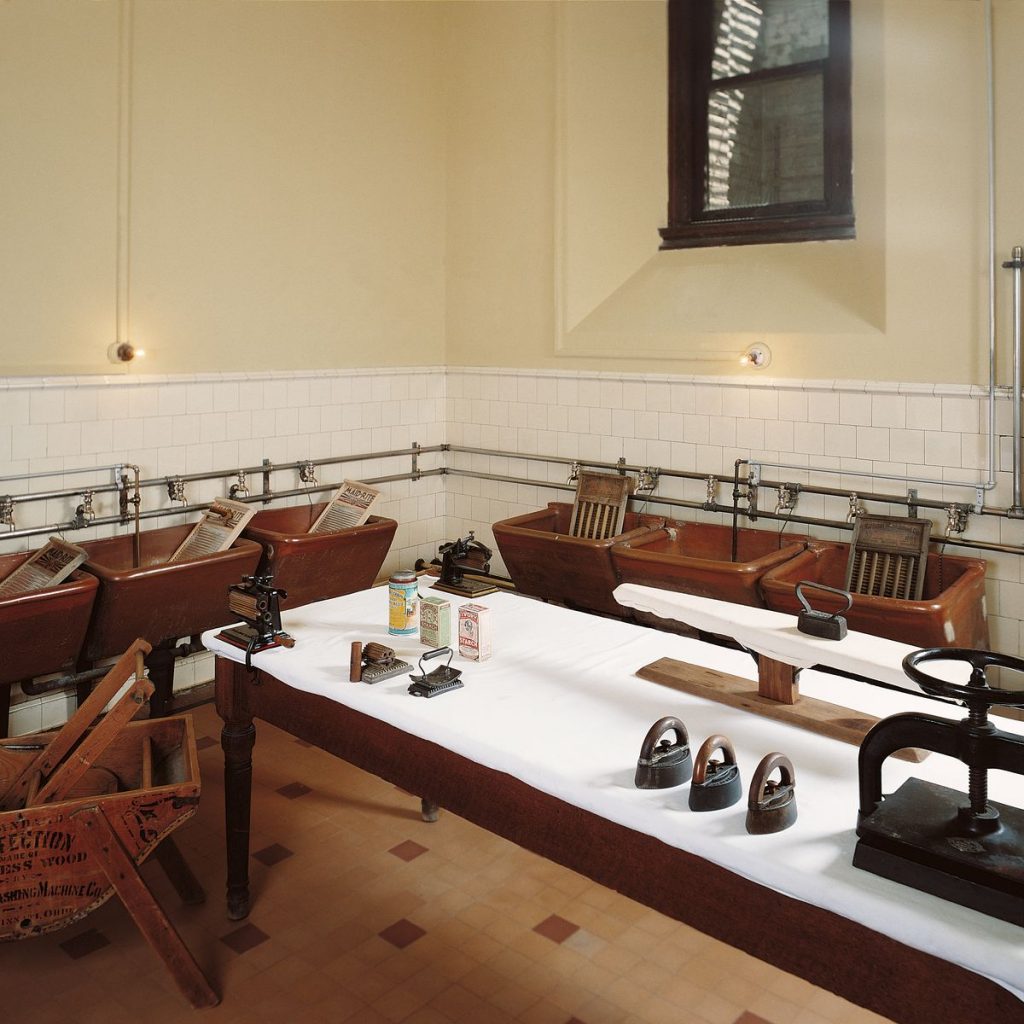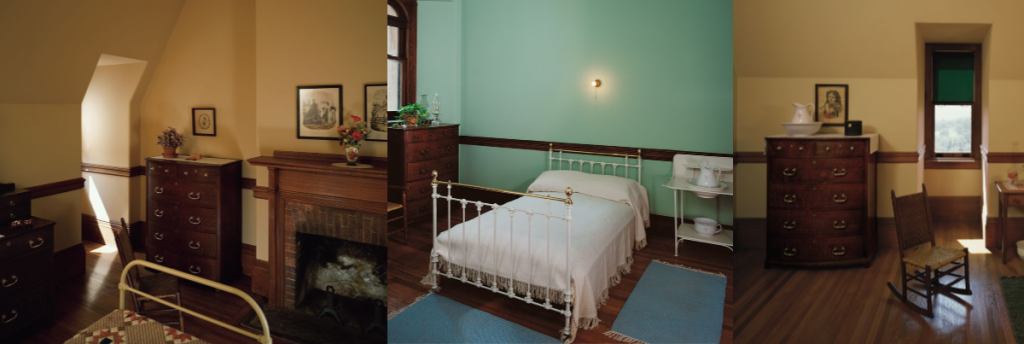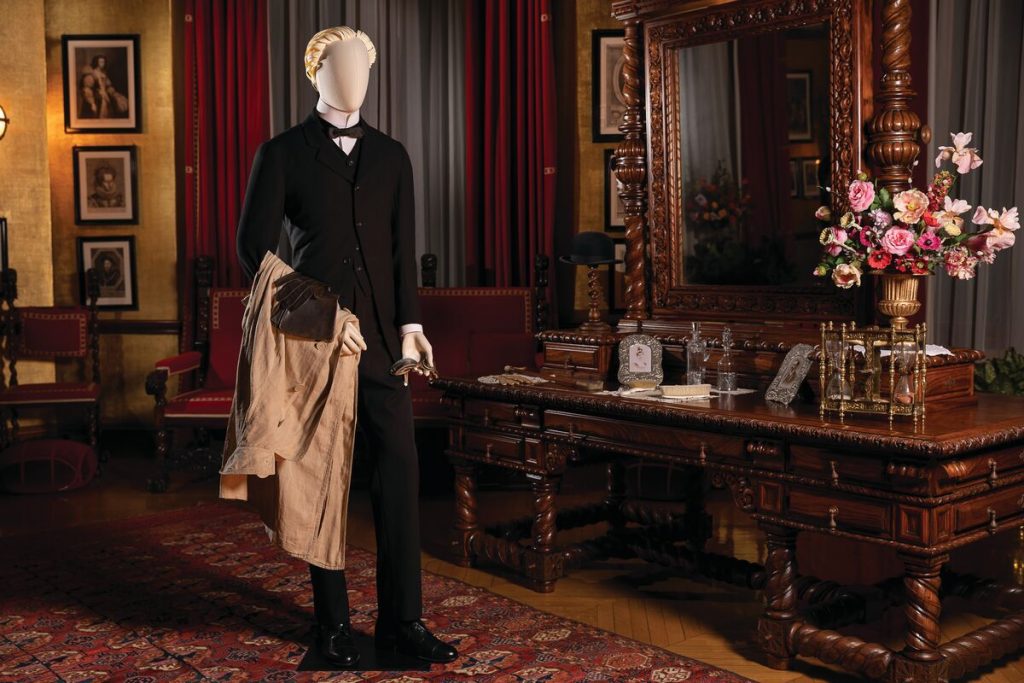Even without a housekeeping staff, you can still live – and sleep – like a Vanderbilt
 In the early 1900s, housemaids at America’s largest private residence, Biltmore House in Asheville, North Carolina, quickly stripped the beds of family members of guests once they left their rooms for breakfast. Linens would be draped over chairs, allowing them to air out, and once the rooms were cleaned, beds would be remade with fresh sheets to allow for mid-day naps, if needed. The process would take place again before turning the bed down for the evening.
In the early 1900s, housemaids at America’s largest private residence, Biltmore House in Asheville, North Carolina, quickly stripped the beds of family members of guests once they left their rooms for breakfast. Linens would be draped over chairs, allowing them to air out, and once the rooms were cleaned, beds would be remade with fresh sheets to allow for mid-day naps, if needed. The process would take place again before turning the bed down for the evening.
At Biltmore, the housekeeping staff’s attention to detail helped promote a peaceful night’s sleep for the home’s owners, George and Edith Vanderbilt, their daughter Cornelia, and their guests. The Victorian Age emphasis on retiring to a clean, freshly made bed and uncluttered bedroom for better sleep is something you can model in your own home.
“A clean bedroom and a welcoming bed (which includes not just clean sheets, but also a well-made mattress and pillows) can have a significant effect on how we approach our nightly sleep, and how well we sleep once we’re in bed,” says Dr. Michael Breus, a clinical psychologist and board-certified sleep specialist.
In a recent National Sleep Foundation study, most respondents listed a cool room temperature, fresh air, and a dark, quiet, and clean room as important factors for a good night’s sleep. Seven out of 10 said they make their bed daily (or almost every day) and 6 out of 10 reported changing their sheets at least weekly. Three quarters reported a more comfortable night’s sleep when their sheets had a fresh scent.
Biltmore’s laundry schedule – a hidden secret to better sleep?
 When sheets at Biltmore needed to be cleaned, staff transported them to spacious laundry rooms in the basement of the palatial home. Laundry equipment included a barrel washer that operated with leather belts and pulleys, an extractor that spun excess moisture from the laundry, and an “ironing mangle” used to press linens. There was also an innovative system of rolling wooden racks for drying, which circulated heated air to speed drying.
When sheets at Biltmore needed to be cleaned, staff transported them to spacious laundry rooms in the basement of the palatial home. Laundry equipment included a barrel washer that operated with leather belts and pulleys, an extractor that spun excess moisture from the laundry, and an “ironing mangle” used to press linens. There was also an innovative system of rolling wooden racks for drying, which circulated heated air to speed drying.
Mary Elizabeth Carter, who worked as a housekeeper for an upper class New York household, provided a look at the time’s laundry process in her 1903 book, Millionaire Households and Their Domestic Economy: Hints for Fine Living.
She wrote, “The twentieth century laundry is supplied with a diversity of smoothing irons – heavy ones for house linens, medium weight for lingerie and little ones of various and curious shapes for smoothing out sleeves and to reach tiny places in the smallest and most fairy-like of baby clothes. Its ventilation is perfect and the water supply, both hot and cold, is perfect.…A spacious, sunlighted (sic) finely ventilated laundry amply furnished for the work to be accomplished in the best manner for the workers speaks eloquently for the character of the ruling classes.”
Carter emphasized that only skilled hands found employment in the laundry rooms at fine homes such as Biltmore. “They handle countless expensive and delicate articles of wearing apparel and house linen and must send all back looking as beautiful as if it had just arrived from Paris.”
 At Biltmore the head laundress cared for the fine materials, such as the linens used in family and guest bedrooms. Under-laundresses worked on linens from the servants’ quarters to ensure workers also rested peacefully on clean sheets. Edith Vanderbilt, known as a very kind and generous woman, set a precedent for having her laundresses also care for linens from the estate worker’s homes. During times of sickness, the amount of washing increased to two to three times a week to prevent others from falling ill. This was seen especially during the Spanish influenza outbreak.
At Biltmore the head laundress cared for the fine materials, such as the linens used in family and guest bedrooms. Under-laundresses worked on linens from the servants’ quarters to ensure workers also rested peacefully on clean sheets. Edith Vanderbilt, known as a very kind and generous woman, set a precedent for having her laundresses also care for linens from the estate worker’s homes. During times of sickness, the amount of washing increased to two to three times a week to prevent others from falling ill. This was seen especially during the Spanish influenza outbreak.
Even if you don’t have a staff to launder your sheets, Biltmore has the right idea when it comes to keeping a tight laundry schedule. The Good Housekeeping Institute (GHI) recommends washing sheets weekly. Research conducted by Dreams in 2018 showed that a surprising 70% of people don’t do this – yikes! Step ahead of the pack, and improve your odds of getting restful sleep, simply by washing your bedding regularly.
More cleaning tips from the GHI
- Use a mattress protector to keep your mattress clean and wash it once a month.
- Check the washing instructions on a sheet’s label and use the hottest temperature allowed for that blend of fabric. Hot water helps kill bacteria.
- Don’t overload your washing machine.
- Remove sheets from the dryer while still damp. That makes them easier to iron and ironing also kills germs.
The importance of “clean & comfortable” at Biltmore
Daily work at Biltmore went well beyond airing out blankets or washing the sheets. A team of staff members worked hard to maintain a high standard of cleanliness in the 35 family and guest bedrooms as well as in the public areas of the 250-room home.
Overseeing the household cleaning operation was a Head Housekeeper who kept accounts of all household expenses and managed all household supplies. The person in this role worked closely with Mrs. Vanderbilt to make sure that, when making purchases, they chose linens and blankets of suitable quality and design. One notable head housekeeper was Emily King, who arrived in North Carolina from England. She worked at Biltmore from 1897 to 1914. Other servants referred to her as “The Matron.”

The lady’s maid and valet: exhausting but important roles
Perhaps the most exhausting household role was that of the Lady’s Maid, who was on call 24/7. This position was traditionally held only by a single woman who could attend to Mrs. Vanderbilt’s needs at any hour. Duties included helping the lady of the house dress and undress, preparing her bath, fixing her hair and makeup, caring for her clothing, and keeping her bedroom clean. If guests visited without bringing their own lady’s maid, Mrs. Vanderbilt’s lady’s maid would assist them as well.
Carter’s book says a lady’s maid needed to use “her own chamois, feather duster, and soft silk cloth, attend to every article on the dressing table, leaving no sign of cosmetic or powder. Everything is immaculately cleaned and polished before she retires from the dressing room.”
She also traveled with the family and kept unpredictable hours. In her book Reminiscences, Pauline Merrill wrote that, during a formal dinner, which was “full dress at eight o’clock” at Biltmore House, the lady’s maid was expected to stay awake and be available to help her mistress at a moment’s notice.
 At the end of the evening, the lady’s maid would help Mrs. Vanderbilt undress and prepare for bed in her cheerful yellow bedroom, walls covered with silk. The furniture in her bedroom at Biltmore House features gold and purple cut silk velvet with matching curtains, which may have been closed at night to create a dark, soothing environment for sleeping.
At the end of the evening, the lady’s maid would help Mrs. Vanderbilt undress and prepare for bed in her cheerful yellow bedroom, walls covered with silk. The furniture in her bedroom at Biltmore House features gold and purple cut silk velvet with matching curtains, which may have been closed at night to create a dark, soothing environment for sleeping.
Similarly, George Vanderbilt had a valet who tended to his personal needs. He helped Mr. Vanderbilt dress, cared for his clothing and ran his bath. In 1900, the valet was an Englishman named Fred Kenny.
Create a soothing nighttime routine
In addition to airing out the sheets and remaking the beds in the evening, the housemaids at Biltmore maintained the room temperature by lighting fires during cold weather. They were also expected to remember each occupant’s preferences, such as whether they wanted their bedding turned down or have a clock left ticking in the room.
Here are some things you can do to prepare your own bedroom for a good night’s sleep, according to the Better Sleep Council:
- Choose room-darkening blinds, shades or drapes that create a dark oasis at night and can be opened to let in sunlight during the day.
- Position alarm clocks, TVs and other electronic devices strategically so their light doesn’t wake you or prevent you from sleeping.
- Select lower wattage light bulbs for your bedside reading lamp.
- Create white noise if you have trouble sleeping by adding a fan, air purifier, air conditioner or small fountain. The white noise helps block out distracting noises.
- Check your room’s temperature. An ideal bedroom sleeping temperature is about 65 F (18C). If the room is hotter or colder, it can disrupt your sleep. Consider adding a programmable thermostat.
- Consider the age of your mattress. If you’ve had it 5-7 years, it may not be providing you with optimal comfort and support. Consider replacing it for a better quality of sleep.
Biltmore® and images of Biltmore House are trademarks of The Biltmore Company, and are used by Restonic® under license. ©2020 all rights reserved.
Rest well & wake up ready to go!
Better sleep gives rise to better mornings, bringing your goals into focus and dreams within reach. Hungry for more sleep info? Dig into these posts:
Eager for more sleep info you can really use?
Join our community
Facebook
and let's continue the conversation.
We'd love to hear what you have to say!
This blog does not provide medical advice. It is intended for general informational purposes only and does not address individual circumstances. It is not a substitute for professional medical advice, diagnosis or treatment and should not be relied on to make decisions about your health. Never ignore professional medical advice in seeking treatment because of something you have read on Restonic.com. If you think you may have a medical emergency, immediately call your doctor or dial 911.

